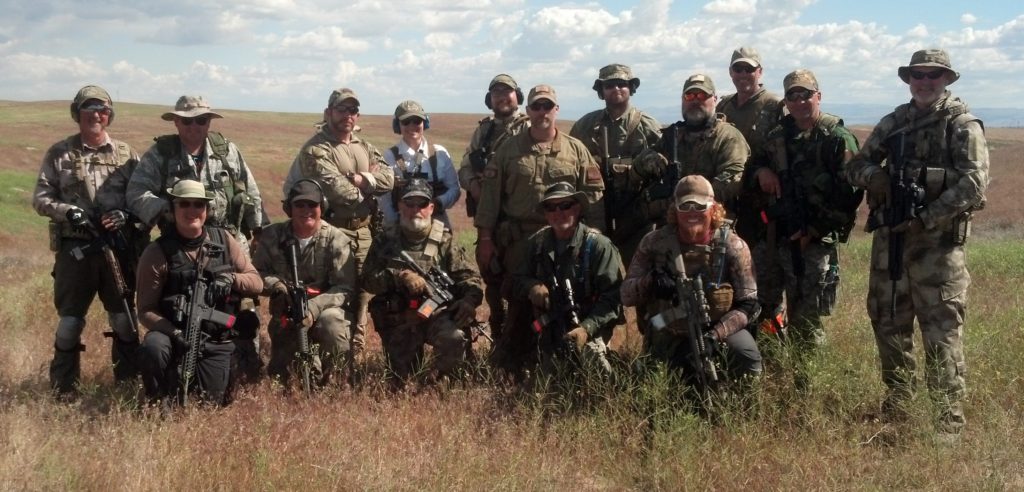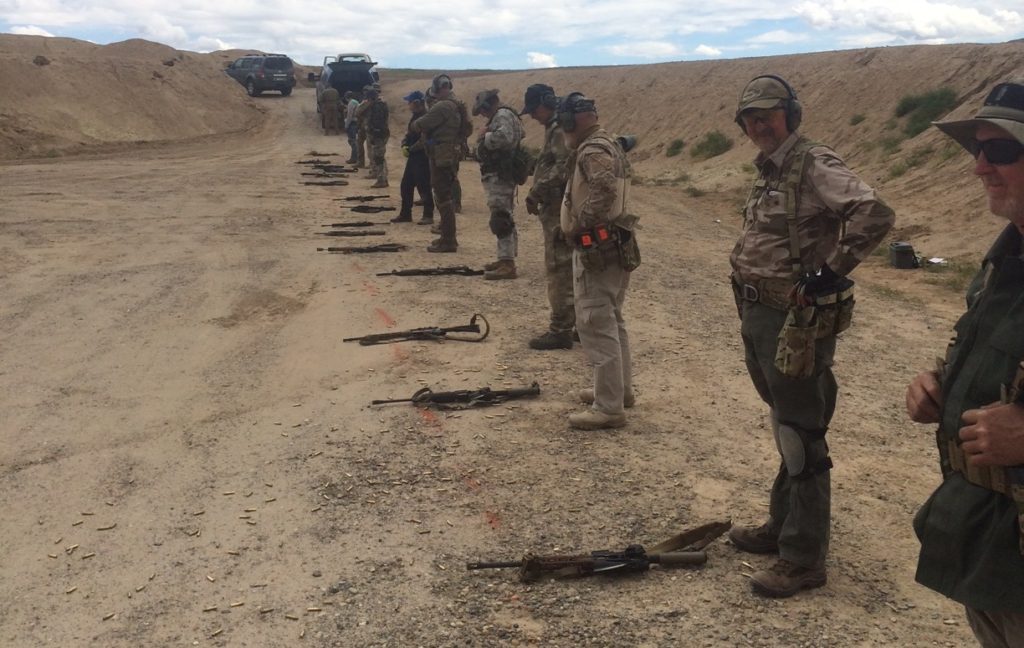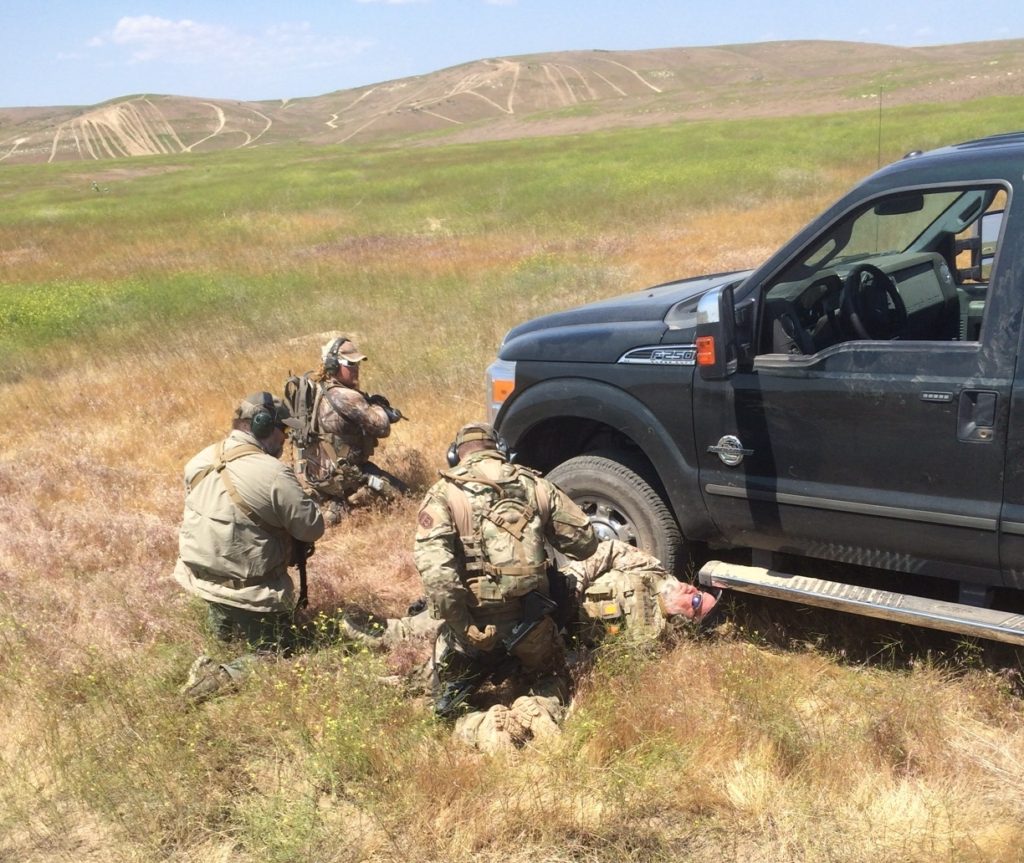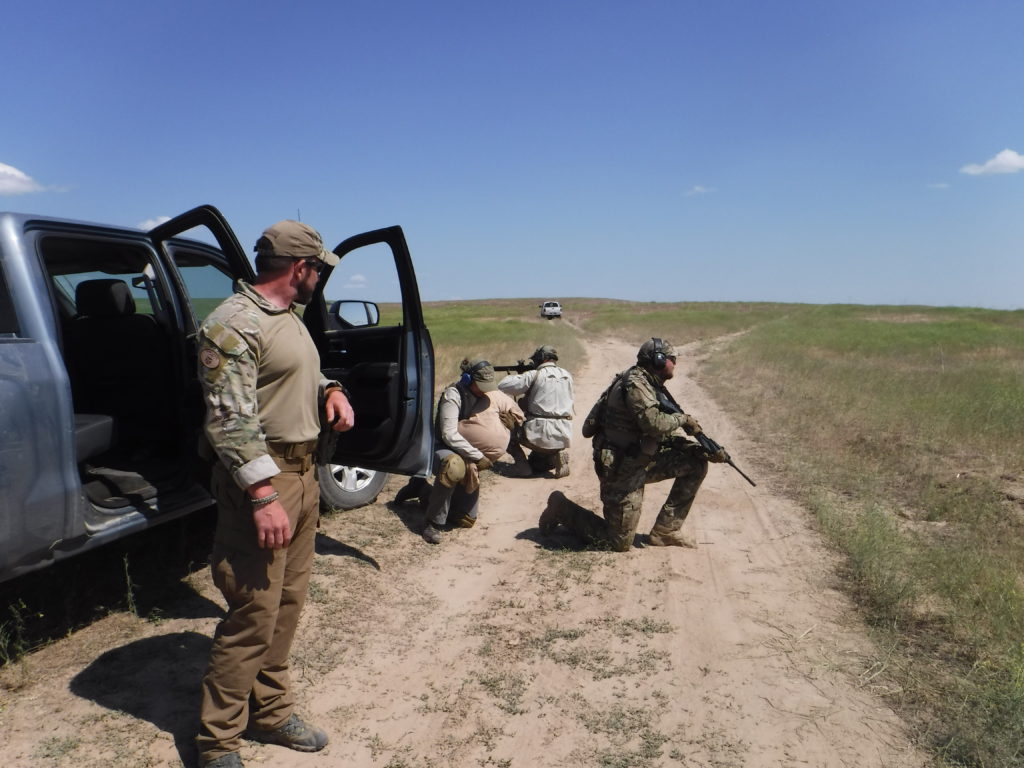Student Review: Idaho CTT & MOB: JOH
I just got through doing the 3-day CTT and 2-day Mobility training with Max in Idaho. Here is my review……….
Since Max’s training is geared towards those of us with a prepper mindset, I want to start with course preparedness first.
The first day of CTT we went through a safety briefing and then ran through various shooting and malfunction clearing drills. What struck me about that first day was the number of gun malfunctions. We were all running AR platforms and shooting 223/556. Several were running piston guns. I didn’t know (but now I do) that piston guns don’t take kindly to bolt override malfunctions and Max made it a point of emphasis for us to stay with the standard gas impingement system version of the AR. Point taken.
But GI guns were failing too. Why, I’m not sure because I wasn’t around any that did. All I know is we spent an inordinant amount of time standing on the range waiting for someone’s gun to be fixed. So before you get to the class, clean and oil your rifle and make sure to test it with the mags and ammo you will be using during the class. Don’t use grease on your rifle, use CLP or SLIP 2000 (a LOT of it!) and that baby will keep on running. I had my own malfunctions later in the week that I’ll describe……mine weren’t caused by bad ammo, bad mags, or poor maintenance though……….
Max’s gun malfunction drills were worth their weight in gold. Max taught this portion in a manner as to simplify the approach down to two basic steps…tap/rack/bang and unload/reload, which is true of pistols too (I don’t actually agree with this description of what I teach, but it’s a student review….;-) Max). The added fly in the ointment with AR’s is the bolt override situation. With a double-feed, stripping the mag out and racking the action three times usually results in the “brass convention” falling out of the gun. But with a bolt override, you go to rack the action and you get a charging handle that’s essentially stuck closed. “Mortaring” the gun and maybe putting the butt on the ground and kicking the charging handle are various ways to deal with this, but Max’s amazing simple and effective method safely gets your gun back in the fight without endangering you or the gun. You’ll have to take the course to find out his method!
The second and third days consisted of building on the buddy pair fire-and-maneuver method and building towards team movements such as peels and bounds. Now as a competitive shooter, I’m all about the accurate aimed shot and target focus, but this fire-and-maneuver can’t be about that……a point that took several rotations through the various drills for me before the lightbulb went on. First Sergeant just got through writing a blog post about “You, Your Rifle, and Ivan”. Read it! Everything about it is spot on with regards to the student progression of this concept (at least, my own experience with it).
On the communication side of things, Max teaches a crawl/walk/run method in which he describes in detail how the communication is supposed to work in a firefight. Action words like “MOVE”, “MOVING”, “STOPPAGE”, “HOLD”, etc. are all words that we used at the outset of progressing through the drills, but as we progressed I personally found that I was NOT using those words to key my basic fire-and-maneuver movements. If I was firing and I noticed my teammate advancing as per plan, then I’d wait to hear his gun go off then up and out I’d go on my bound. I didn’t need to hear him say “MOVE” to know it was time to move. “STOPPAGE” is a pretty important command because if you are moving and your buddy yells “STOPPAGE”, that means rounds aren’t being put on target and that means you need to hit the dirt and start firing.
On peels it was pretty evident when the guy beside you peeled because as long as you weren’t fixated on the target and doing your scan, you knew when it was your turn to peel. It became important later on to save the actual spoken communication for more complicated situations such we encoutered in the Mobility scenarios. It came to a point where the basic “move”, “moving”, etc commands were cluttering up the radio waves so to speak, when more important commands really needed to be heard and understood by all affected.
A side effect to this implicit communication was that our bounds and peels became faster and more violent so to speak. It saved us precious seconds in the rush in to or out of contact when we scanned and reacted to what our teammates were doing.
Again, go back to the blog post on “You, Your Rifle, and Ivan” and make sure you get the concept down on the idea of NOT being a target shooter in a combat situation and making sure you are scanning and knowing what the people around you are doing and where their heads are and what they’re doing in the fight as well.
Max:
We went on to Mobility and if I learned nothing else from Mobility it was that vehicle mobility drills cannot be trained and gamed out enough. Max started us with basic contact drills and how to deal with road blocks, reversals and disabled vehicle scenarios. But then after we had demonstrated competency in those basic drills he allowed us to advance to different role-playing scenarios such as man-down, dealing with the elderly (slow, non-shooter types like grandma and grandpa) and hysterical kids. The fact that we had no less than 3 ER trauma doctors and 1 ER trauma nurse in the class made the medically-stressed scenarios all that more realistic and educational. At one point it was like we had switched from a Mobility class to a Combat Medicine class, which left me feeling like I really need a lot more Combat Med training (hint hint Max and the Idaho folks).
It was during Mobility that I encountered my own gun malfunctions (two). The first one occurred when I was running down the dirt (okay, talcum powder dusty) road and fell on my gun, ejection port to the ground (and flash hider full of dirt I might add) (also, safety on and finger off the trigger so no ND). When I got back into the fight I fired (yes, the dirt just poofed out of the flash hider like Max and Chris said it would) and the gun started short-stroking. Tap/rack/bang/click, and basically I was firing a single shot (but still firing…..you can fire a single-shot AR at a rate fast enough to keep the enemies heads down). So this was a cleaning issue and was remedied by first switching to a back-up gun (always bring a back-up gun if you are able to) and then cleaning it that night. Problem solved.
The next problem occurred the next day. Rolling along, shooting, moving, etc, etc and the gun quit working. This time it was a broken bolt. Broke right in two at the cam pin hole. So here’s the teaching moment. The night before when I cleaned it I noticed that the bolt wouldn’t hold the bolt carrier up when I put the BCG down bolt-face first on the work bench. This is a sign of worn gas rings. I estimate that the gun had somewhere in the neighborhood of 5 or 6 thousand rounds through it. So my take-away is that if I ever encounter that situation where I feel there’s worn gas rings, I’ll just replace the whole bolt. You can get a DPMS assembled bolt from Brownells for $45.00. Yeah, I could replace the gas rings and spend a lot less money, but why risk running a bolt that might be close to failure. Might as well replace the cam pin, cotter pin and firing pin while I’m at it. Seems there’s a post on the MVT forum about how often and at what intervals the spec ops community rebuilds their guns…..I’ll have to search it out again and reread it. I’m guessing that 5000 rounds through a gun prompts a variety of parts replacements.
Below: Scenario: Mother with baby exiting immobilized vehicle stuck in the kill zone.
Another teaching moment….carry another BCG already lubed and ready to go. That’s what I did and switched out BCG’s (that I had test-fired with that gun/ammo combination prior to the class) and I was back in business. You could carry a spare bolt, firing pin, etc but then what if the carrier key screws are loose and you don’t have the allen wrench to fix it (those two screws should be staked anyway right)? I’ll just carry a spare BCG and call it good.
The gun ran fine through about 1800 rounds over five days in a very dusty environment and only malfunctioned twice, once due to a broken bolt and then the instance where the ejection port got a good dose of dust in it when I fell.
Physical fitness. You don’t have to be a marathoner or run a 4.8 40 or be a power-lifter to do this class. Max does a good job in being accomodating to everyone’s physical limitations and capabilities. But coming to the class with a decent level of fitness and wellness makes the class that much more beneficial to you and your teammates.
A few tips………if you are coming to a class in Idaho, wear gators or a boot with plenty of high ankle support like a hunting boot. The cheatgrass seeds here are awful and having gators prevents them from getting onto and into your socks and rubbing on your ankles.
Mark your magazines with some sort of bright paint or tape and make sure they have your “mark” on them. Flourescent orange or pink duct tape does really well. Several teams could do the same drill over the same ground and having brightly-colored, identifiable mags really helps speed things along.
Bring two guns that are test-fired prior to you coming to the class. And use lots of oil!
I highly recommend Max’s classes! He is a very good teacher and communicator of concepts and tactics. He’s fun to listen to! I had to pull out of the Combat Patrol class this weekend due to injury and so I can’t wait for him to return to Idaho so I can do that one too!
I need to say a word about Max’s assistant Chris. Chris came down from WA to help out with the class and since he’s a combat veteran he has a lot of very teachable stories to bolster what Max is trying to teach us. Obviously Max has his own extensive background too and I never felt that either of them were trying to make something up as they went along….they had both done it for real, knew what worked, and were very good at telling the story and hitting the important points of each movement and drill we were doing in both Mobility and CTT.
I want to close by saying a few words about the students. I’m not sure about the make-up of other MVT classes or if Max attracts the same type of personnel to his other classes, but I have to tell you I was very impressed by our class. All of them were very experienced gun handlers already and didn’t need to be taught how to shoot. All of them were very friendly and willing to help each other. Most of them were competitive shooters. We had 3 ER doctors, 1 ER nurse, 2 airline pilots, several engineers, a magazine editor, several career high-ranking military officers and combat vets, a guy that has been fighting wildland fires for 51 years, and a very capable (and I mean like, this guy is probably going to thrive when the SHTF) Idahoan who is moving to Alaska to further embrace the preparedness lifestyle. Bottom line, it was a class with a pretty high firearms and preparedness IQ and I came away realizing that I have a lot of catching up to do. And this week I have learned that Max Velocity’s classes are a great way to sharpen the preparedness mindset saw.
Good Luck!!…….and sign up for a class!!
JOH




